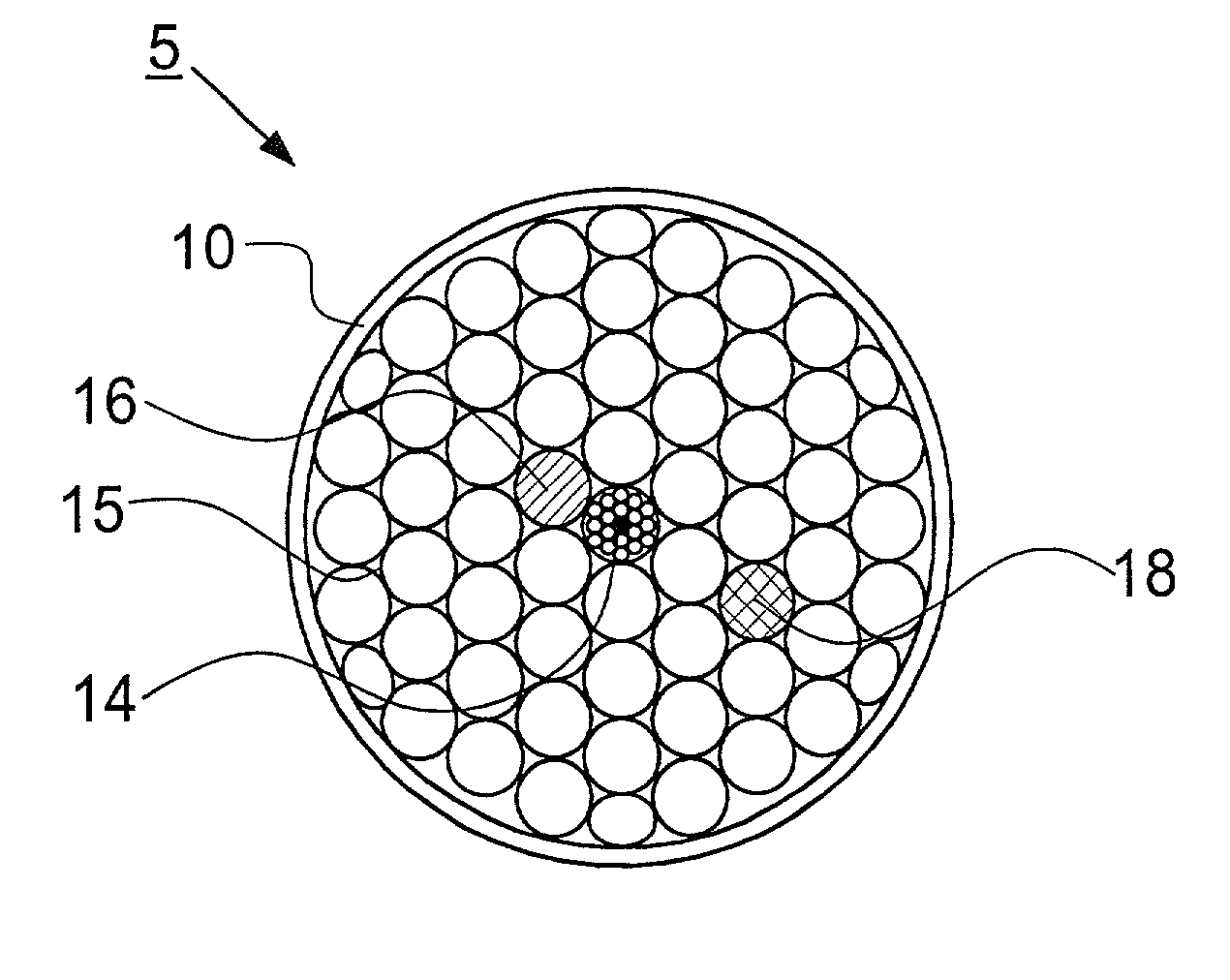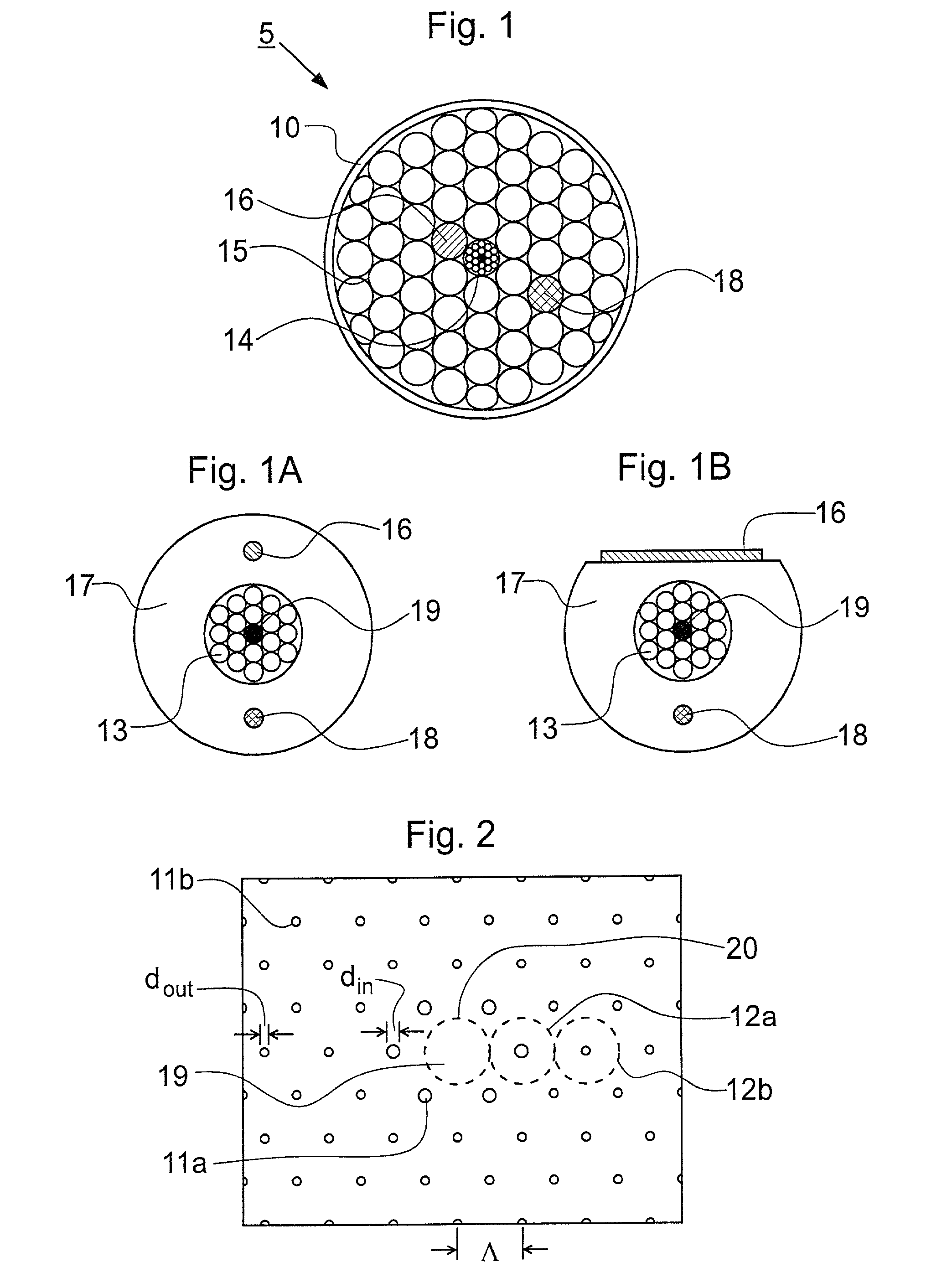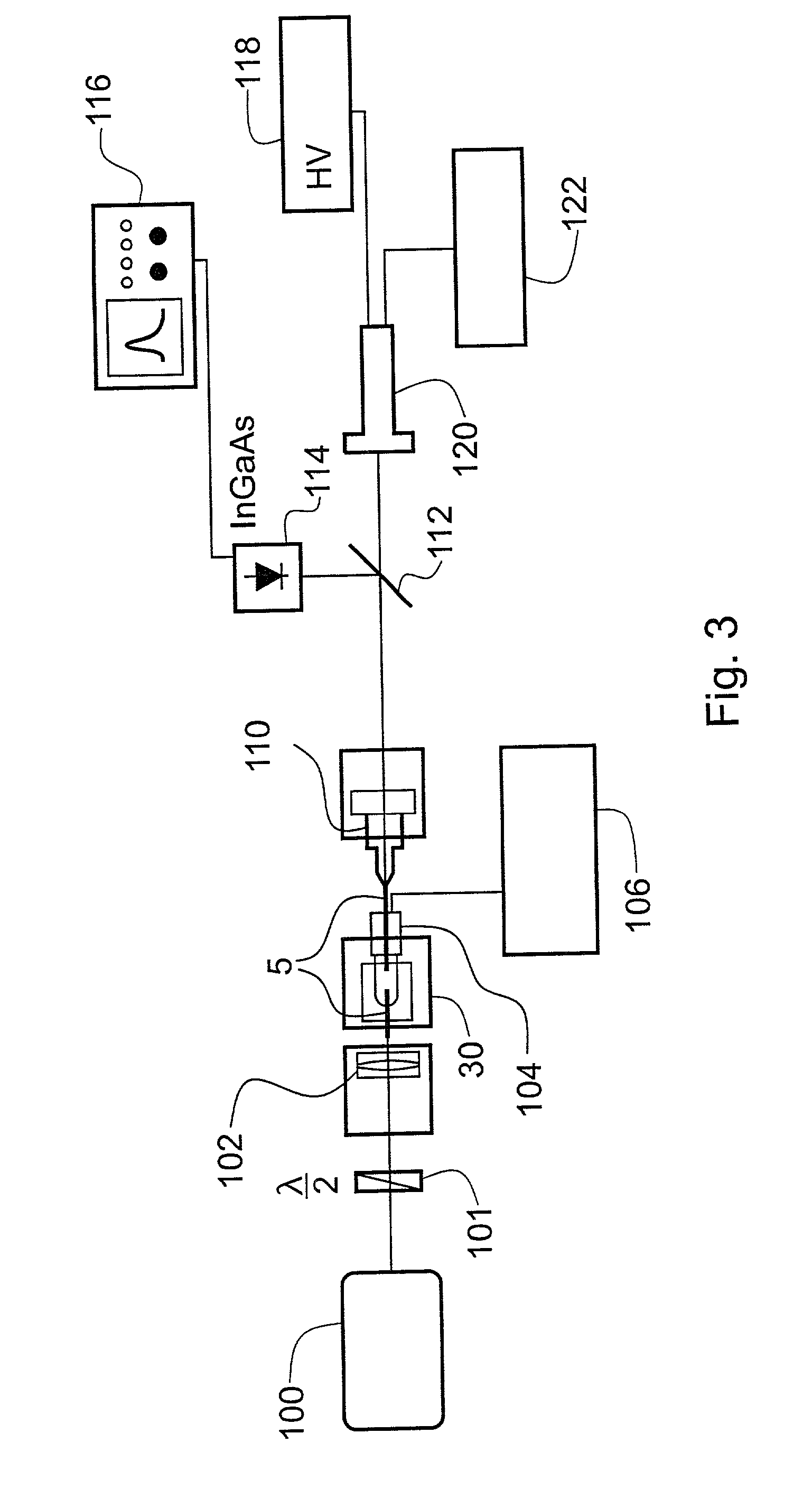Optical parametric devices and methods for making same
a technology parametric devices, applied in the field of optical parametric devices, can solve the problems of inability to deliver large bandwidth, inability to achieve large bandwidth, etc., to achieve the effect of improving efficiency and bandwidth
- Summary
- Abstract
- Description
- Claims
- Application Information
AI Technical Summary
Benefits of technology
Problems solved by technology
Method used
Image
Examples
Embodiment Construction
[0057] FIG. 1 is a sectional view of a holey fiber structure according to an embodiment of the invention. A microstructured inner cane 14 containing the optically active waveguiding part of the structure is supported by an array of larger-scale capillaries 15. The inner cane 14 comprises a solid core and a holey cladding, which are illustrated in more detail in FIG. 2, discussed further below. The support capillaries 15 are retained in a relatively thin outer jacket 10. In an alternative embodiment, the outer jacket could be dispensed with and the support capillaries fused together at the top and bottom prior to pulling. As can be seen from the figure, the support capillaries 15 have an outside diameter approximately the same as the outside diameter of the inner cane 14, so that the inner cane can be arranged with the support capillaries 15 in a hexagonal close packed array. More generally, it is convenient for the support capillaries to be of the same order of magnitude of lateral ...
PUM
| Property | Measurement | Unit |
|---|---|---|
| length | aaaaa | aaaaa |
| area | aaaaa | aaaaa |
| area | aaaaa | aaaaa |
Abstract
Description
Claims
Application Information
 Login to View More
Login to View More - R&D
- Intellectual Property
- Life Sciences
- Materials
- Tech Scout
- Unparalleled Data Quality
- Higher Quality Content
- 60% Fewer Hallucinations
Browse by: Latest US Patents, China's latest patents, Technical Efficacy Thesaurus, Application Domain, Technology Topic, Popular Technical Reports.
© 2025 PatSnap. All rights reserved.Legal|Privacy policy|Modern Slavery Act Transparency Statement|Sitemap|About US| Contact US: help@patsnap.com



